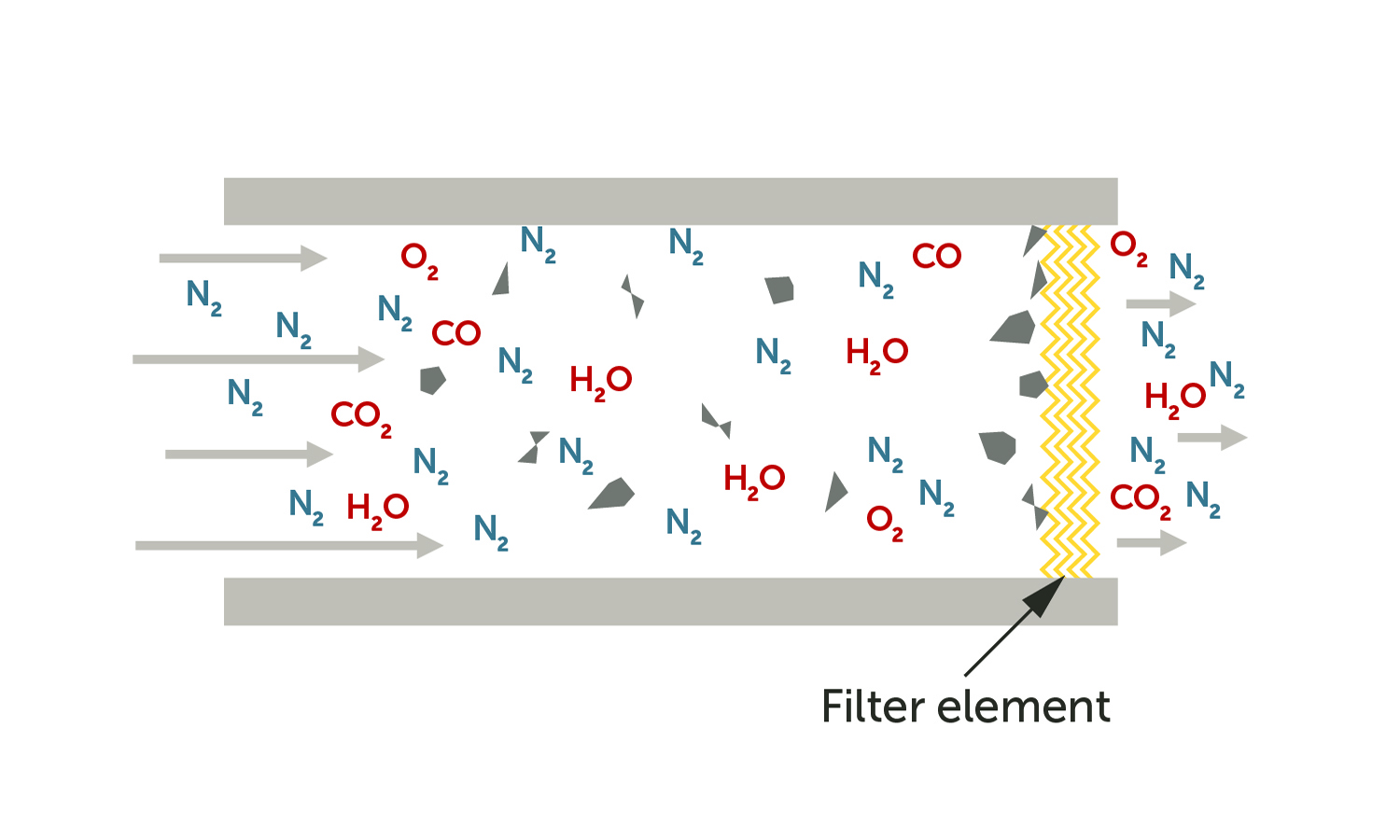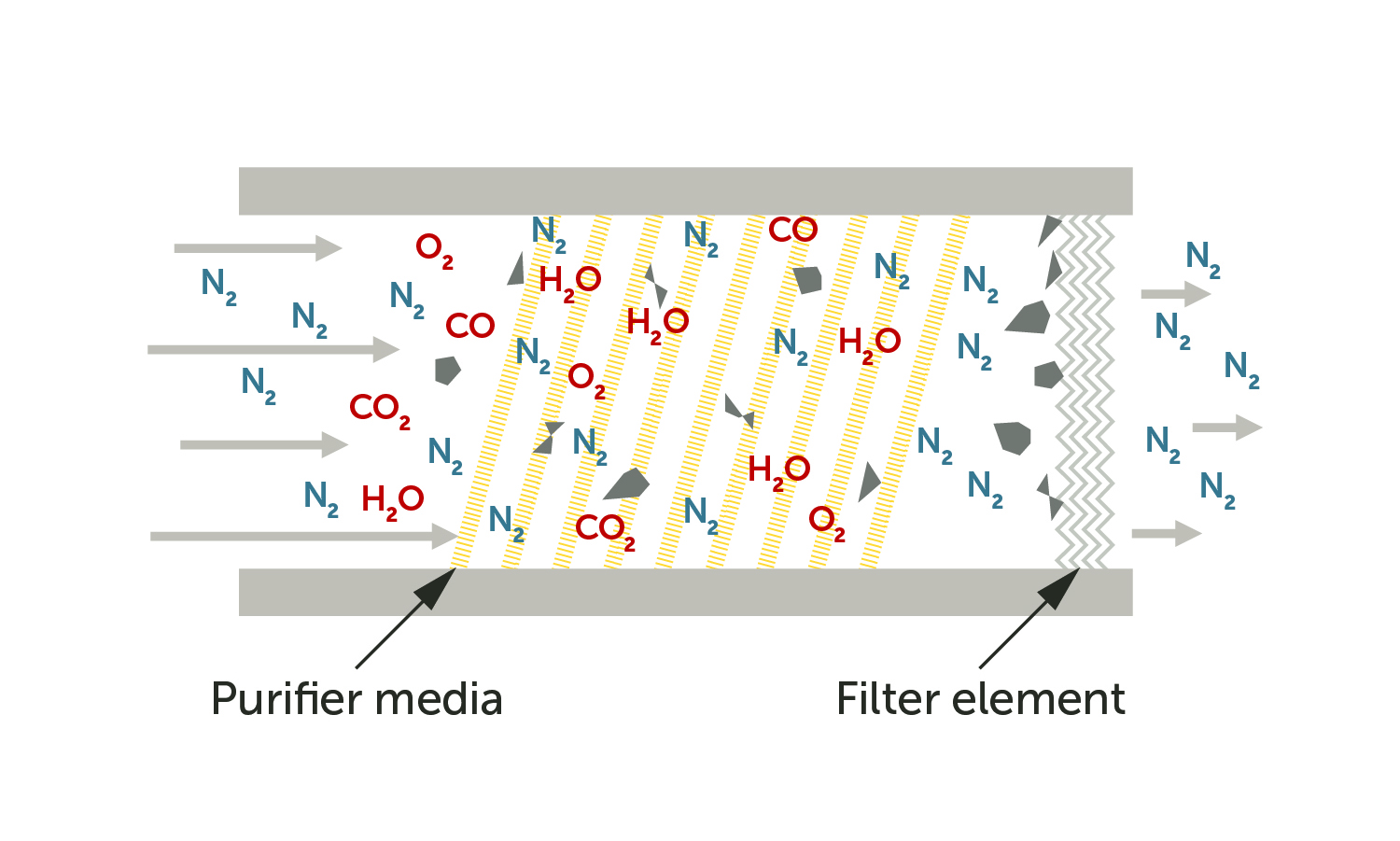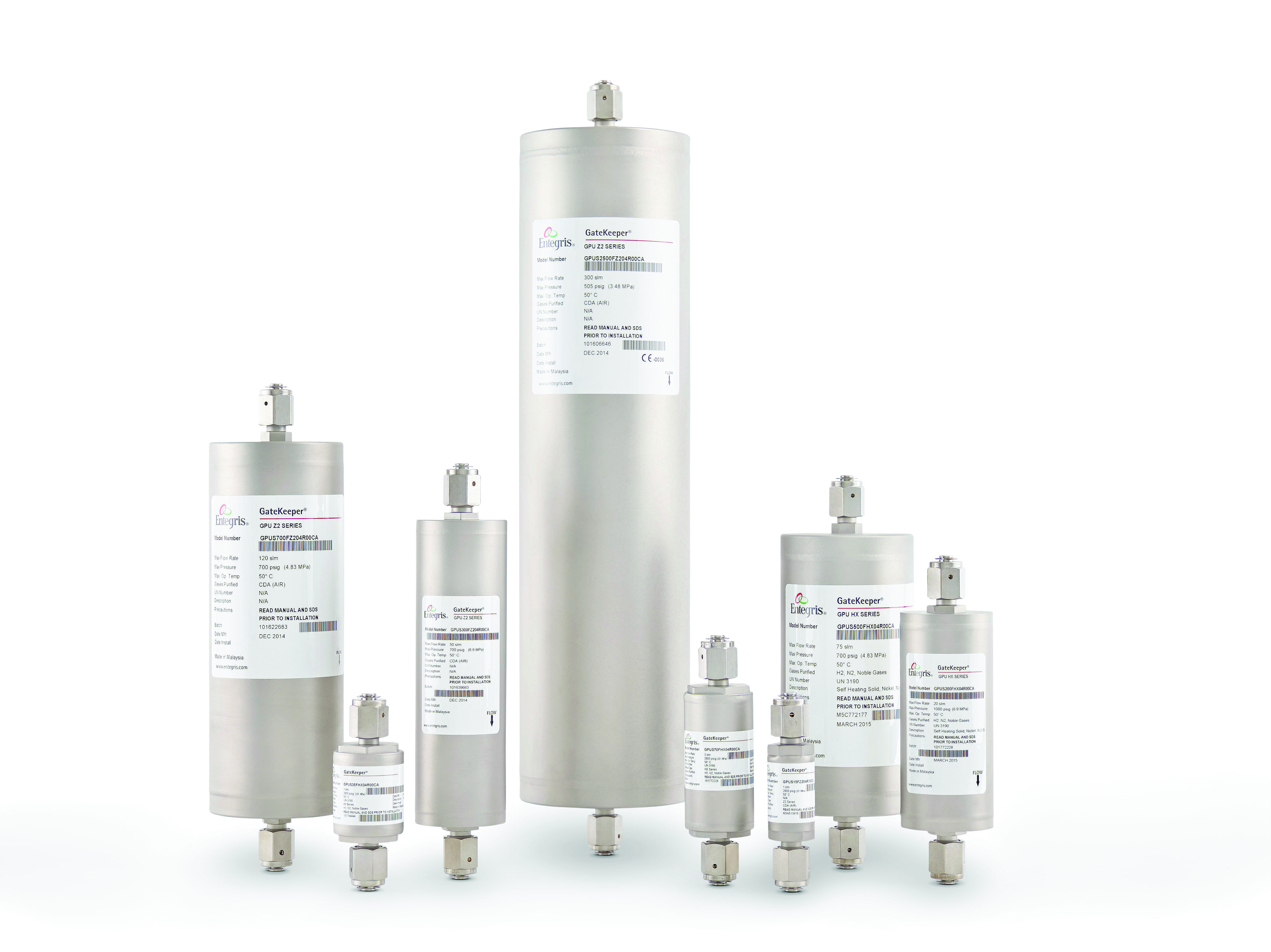
Fig. 1. Filtration: A process or device thst contains a porous element designed to prevent suspended solid particles from breaching the element barrier in a gas stream. All images: Entegris, Inc.
Semiconductor device yields have long been impacted by device contamination. As process nodes continue to shrink from 10 nm to 7 nm and soon to 5 nm — pushing CMOS to its very limits — the sensitivity to metal contamination during manufacturing processes has increased significantly. This article describes the primary causes of metal contamination in gas streams and ways to address the problem through the use of specially-designed gas delivery systems.
Where does metal contamination originate?
Possible root causes of semiconductor device contamination in the front- and back-end-of-line processes include sensitivity to different process steps and cross-contamination induced by chemicals, ultrapure water and gases. The process environment, which included the tools, network for gas/chemical distribution, and boxes for wafer handling and transportation, contribute to the problem.
Contaminants from the metallic components of process tools, plumbing and tubing play a role in metals contamination generation. Among the most common metallic contaminants are the transition metal constituents of 316L stainless steel — chromium (Cr), iron (Fe), manganese (Mn), molybdenum (Mo), and nickel (Ni) — as well as main group metals including sodium (Na), calcium (Ca), and aluminum (Al). Depending on the metal, it can degrade CMOS gate stacks, reduce carrier lifetime and more.
There are two main factors that contribute to metal impurities on a wafer due to the process environment itself: 1) metal contamination inherent to the gas supply; and 2) corrosion of metal surfaces induced by gases from the gas system itself due to the gases that are required by semiconductor manufacturing processes.
Not all processes requiring a gas supply use corrosive gases. Those that do, however, can impact the entire gas supply network. Dry etch processes, including ion beam etching, plasma etching, and reactive ion etching use corrosive gases that include arsenic pentafluoride, (AsF5), boron trichloride (BCl3), chlorine (Cl2), hydrogen chloride (HCl), silicon tetrafluoride (SiF4), and phosphine (PH3), among others. Additional corrosives include dichlorosilane (SiH2Cl2, used in epitaxy) and chlorine trifluoride (ClF3), which is used for cleaning various semiconductor tool components.
In a high-volume manufacturing environment, it is general practice to employ a main gas cabinet in the sub-fab environment to store the bulk gas supply for multiple process tools. The gas is delivered to individual tools using a valve manifold box. Because plasma etch and epitaxial tools can require the same corrosive gases, both are typically supplied from the same bulk source. This scenario subjects the entire gas delivery system to corrosion and contributes to the contamination of the gas supply itself.
Historically, the tolerance for metal contaminants in gas supplies was 1010 atoms/cm2. As devices reach smaller nodes and sensitivity to contaminants increases, the industry has tightened purity standards 100-fold to 108 atoms/cm2 in an effort to reduce defect-causing contaminants found in process gases. One way to meet this new standard is by using gas purifiers designed to remove moisture, hydrocarbons, and volatile metals from corrosive gasses and gas distribution systems, thereby reducing the release of metal contaminants to acceptable levels and subsequently improving wafer yields.
Mitigating moisture contamination
High moisture levels in the corrosive gas stream are a significant contributor to corrosion. Mitigating moisture begins at the gas source and continues to the transportation and storage of the gas. If moisture can be reduced below a certain threshold (ca. 500 ppbV or greater), corrosion stops and volatile metals inherent to the gas supply can be removed.
Moisture contamination in gas supplies can reach hundreds of parts per billion (ppbV). By implementing a gas delivery system fitted with a mechanism that is designed to absorb moisture from the supply, outlet concentration can be reduced to 15 ppbV or less.

Fig. 2. Purification: A process or device that contains media designed to “grab” molecular contaminants (O2, H2O, N2, CO) as they pass through a gas stream using the principles of chemical adsorption.
Removing contaminants from the gas supply
In addition to mitigating moisture, capturing volatile metal particulates using special filters diminishes the occurrence of wafer contamination.
While gas delivery systems themselves feature similar components, the process gases and the contaminants inherent to them vary from gas to gas. As a result, different gases may require advanced construction materials to remove contaminants. One solution to address this is to incorporate nickel filters in the purifier cartridge instead of stainless steel (see Fig. 1). Nickel provides a much greater degree of corrosion resistance, as it is virtually unreactive towards many corrosive gases. For best results, purifiers are installed at the gas source and at the tool (see Fig. 2).
Conclusion
Minimizing moisture in a gas supply to 15 ppb or below, combined with reducing on-wafer volatile metal contaminants to < 108 atoms/cm2 is the best strategy to improve final wafer yields, particularly in finer nodes. To achieve both these objectives, equipment such as Entegris’s Gatekeeper GPU corrosive gas purifiers can be used. They are constructed using contaminant adsorbents combined with advanced corrosion-resistant particle filtration and is engineered to remove volatile metal contaminants and moisture from corrosive gas streams. The GPU family’s moisture efficiency performance is validated using state-of-the-art analytical instrumentation. The purifiers can be mounted at the point of use and at the gas supply in any physical orientation to provide end users with flexibility when designing gas delivery systems.

The GateKeeper GPU family of gas purifiers.
Entegris® and GateKeeper® are trademarks of Entegris, Inc.
Rocky Gipson, Ph.D., is Manager of Gas Purification Research and Development at Entegris, Inc. www.entegris.com




